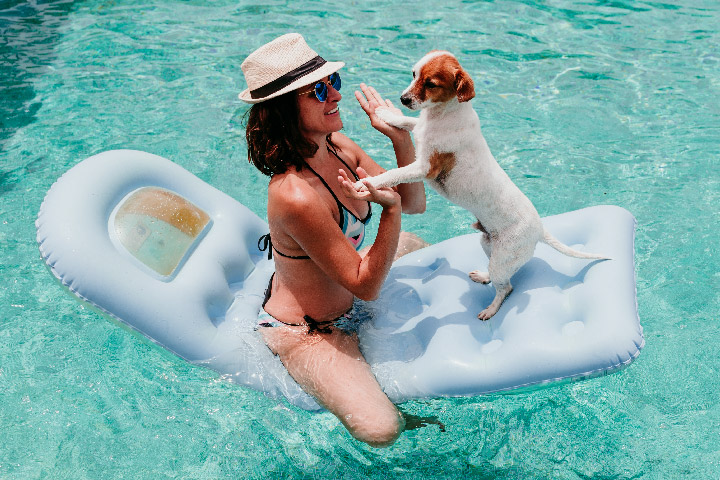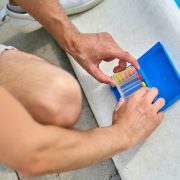
Chlorine vs. Sunlight: Understanding the Battle and Protecting Your Swimming Pool with Cyanuric Acid
Chlorine plays a crucial role in maintaining the cleanliness and safety of your swimming pool. It acts as a disinfectant, killing bacteria, algae, and other harmful microorganisms. However, sunlight poses a significant challenge to maintaining proper chlorine levels in your pool. In this article, we’ll explore how the sun breaks down chlorine in swimming pools and provide tips on how to use cyanuric acid or stabilizer prevent this process and to maintain a healthy pool environment.
How Sunlight Breaks Down Chlorine:
Chlorine reacts with sunlight through a process known as photolysis. Ultraviolet (UV) rays in sunlight break down chlorine molecules (specifically, hypochlorous acid and hypochlorite ions) into their constituent elements, including chloride ions and oxygen. As a result, the chlorine in your pool becomes less effective at sanitizing the water.
This breakdown can occur rapidly, with as much as 90% of the free chlorine in a pool being lost within just a couple of hours of direct sunlight exposure. This decrease in chlorine levels can leave your pool vulnerable to bacteria, algae, and other contaminants.
How to Prevent Chlorine Breakdown by Sunlight:
- Use Stabilized Chlorine:
One way to protect your pool’s chlorine from the sun’s UV rays is to use stabilized chlorine, such as dichlor or trichlor. These products contain cyanuric acid, which acts as a stabilizer, protecting the chlorine molecules from photolysis. Cyanuric acid forms a temporary bond with chlorine, shielding it from the sun’s UV rays while still allowing it to sanitize the pool water.
- Add Cyanuric Acid to Your Pool:
If you’re using unstabilized chlorine, such as liquid bleach or calcium hypochlorite, you can still protect it from sunlight by adding cyanuric acid separately. The ideal cyanuric acid level in your pool should be between 30 and 50 ppm. Be cautious when adding cyanuric acid, as too high levels can cause chlorine to become less effective at killing bacteria and algae.
- Partially Shade Your Pool:
Installing shade structures around your pool, such as umbrellas, shade sails, or pergolas, can help reduce the impact of sunlight on your pool’s chlorine levels. While it may not be feasible to completely shade your pool, even partial shade can provide some protection and help maintain more consistent chlorine levels.
- Optimize Chlorine Application Timing:
Adding chlorine to your pool during the early morning or late afternoon, when the sun’s rays are less intense, can help reduce the amount of chlorine lost to photolysis. By doing this, you’ll give the chlorine a chance to sanitize the water before the sun has an opportunity to break it down.
- Regularly Test and Adjust Chlorine Levels:
Regularly testing your pool water and adjusting the chlorine levels is essential for maintaining a clean and safe swimming environment. This becomes even more critical when sunlight is breaking down chlorine in your pool. Test your pool’s chlorine levels at least once a week, and more frequently during periods of heavy use or after storms.
Conclusion:
Sunlight can be a formidable enemy in the battle to maintain proper chlorine levels in your swimming pool. By understanding how the sun breaks down chlorine and taking steps to prevent this process, you can ensure that your pool remains clean, safe, and enjoyable for swimmers. Using stabilized chlorine, adding cyanuric acid, partially shading your pool, optimizing chlorine application timing, and regularly testing and adjusting chlorine levels are all effective ways to protect your pool’s chlorine from the sun and maintain a healthy pool environment.




